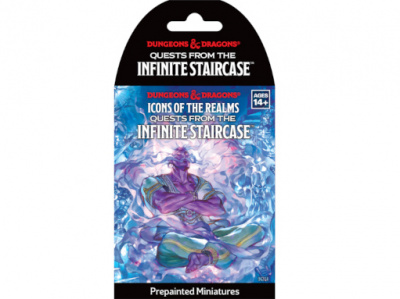 Rolling for Initiative is a weekly column by Scott Thorne, PhD, owner of Castle Perilous Games & Books in Carbondale, Illinois and instructor in marketing at Southeast Missouri State University. This week, Thorne uses lessons from Kaijudo and others to show the path to success for new games.
Rolling for Initiative is a weekly column by Scott Thorne, PhD, owner of Castle Perilous Games & Books in Carbondale, Illinois and instructor in marketing at Southeast Missouri State University. This week, Thorne uses lessons from Kaijudo and others to show the path to success for new games.Wizards of the Coast announced just after Gen Con that the company would pull the plug on the Kaijudo game this coming October. In an ICv2 interview with WotC Sr. Brand Manager R. E. Dalrymple (see "The 'Kaijudo' Post-Mortem"), the weak viewership of the TV series was credited for problems with sales of the card game, as even the low viewership never transferred to sales of the game. This is the second go-round for Kaijudo (known in its previous incarnation as Duel Masters), which is still quite a popular game in Japan and has been for over 10 years but, despite WotC giving away 1000’s of decks and packs, has never caught on here.
WotC, and a number of other companies, really need to listen to Al Ries, who pointed out years ago that there is generally only room for two brands in a particular category, and that "third place is no place." In the trading card game category, there are currently two top brands, Magic: The Gathering and, depending on where you are, Yu-Gi-Oh! or Pokemon. Anything else is third place.
To get out of third place in your category, you have two options: (1) Work really hard and spend money to supplant the second or first place brand; or (2) Create a new category and make yourself number one in it. WotC opted for option #1, spending money and time to make Kaijudo #1 or #2 in the TCG category, which is almost impossible, given the entrenched positions that the leading card games in the TCG category have. Trying to spend your way to the top is usually a failure. Just look at Hecatomb, Dreamblade (see "WotC Vows Support for Core Channel") and Upper Deck's Vs. It generally works only if the top brands in the category are already weak. Magic, Yu-Gi-Oh! and Pokemon aren't.
A better way for a new product to succeed is to create your own category and dominate it. I can think of two examples of products that have done so successfully in the past five years: Dominion and Cards Against Humanity. Though to be accurate, neither company planned to create a new category, rather the game play did so.
Both games entered the very crowded board/card game category, which was dominated by games like Munchkin, in the straight hobby card game category, and Settlers of Catan in the hobby board game category. Ergo, Dominion creates a new category, the deck building game, and it becomes successful as shown by the number of deck building games that have hit the market in the years since Dominion released. Same thing with Cards Against Humanity. Yes, it is a risqué Apples to Apples knockoff, but it was a risqué Apples to Apples knockoff that caught people's attention and created a new category into which other games (Personally Incorrect and Love 2 Hate come to mind) have moved indicating that these companies see this as a viable category.
In both cases, Dominion and Cards Against Humanity dominate their particular category, mainly because they are both good and have first mover advantage. Unless superior games arise in the categories, both should continue to dominate their respective category and nether will have to fight to succeed in the much broader board/card game category. Want to not fail in the gaming industry, or any industry for that matter? Create your own category and dominate it.
The opinions expressed in this column are solely those of the writer, and do not necessarily reflect the views of the editorial staff of ICv2.com.







